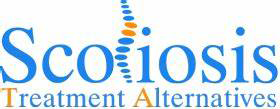The Schroth Method of scoliosis specific exercises have been around for nearly 8 decades in Europe but are only now just starting to get attention here in the US. Although these scoliosis specific exercises are relatively new in the United States, Schroth Method research is extensive around the world. This unique exercise method has been shown to be quite effective in the scoliosis literature as well.
Research On The Schroth Method
1. A prospective study done at the Schroth clinic in Sobernheim germany in 1987 by Dr. Weiss, the grandson of Katerina Schroth called The Efficacy of Scoliosis Specific Rehabilitation after Schroth Method obtain detailed data on the efficacy of scoliosis-specific spinal rehabilitation after Schroth. Patients we selected for inclusion of the study based on certain inclusion criteria. A total of 181 scoliosis patients (average age of 12.75 years, average Cobb angle 27 degrees with an avege Risser’s sign of 1.4 were instructed and performed Schroth Method of scoliosis exercises under the supervision of Schroth Method Instructors and were followed for an average 33 months.
In this Schroth Method research study there were no cases of relative progression (meaning an annual increase in curvature of 5 degrees or more) were observed. The patient were grouped by age and severity of curvatures to compare the course of progression. The lack of any relative progression as well as direct comparison of the development of scoliosis under therapy with the spontaneous course confirmed the efficacy of the Schroth rehabilitation program. Of particular note were the improvement of cases with large curvatures that would have ordinarily had a poor prognosis.
2. The efficacy of Schroth 3-dimensional exercise therapy in the treatment of adolescent idiopathic scoliosis was done by Professiors Otman, Kose and Yakut in at the School of Physical Therapy and Rehabilitation at Hacettepe University in Ankara Turkey to determine the effectiveness of 3-dimensional therapy in the treatment of adolescent idiopathic scoliosis.
They examined 50 adolescents from 1999 to 2004 (average age 14 years old) with scoliosis whose were treated using the Schroth Method as outpatients in a program that was 4 hours a day and 5 days a week for the first 6 weeks, then after that they continued with a home exercise program using the same Schroth exercises. The Cobb angle, vital capacity and muscle strength of each patients was recorded pre-treatment, 6 weeks after beginning therapy, than again at 6 months and one year intervals. The results of each of the factors was compared and it was found that the average Cobb angle at the start was 26.1 degrees was reduced by 2.5 degrees after 6 weeks, 6.75 degrees after 6months and 8.25 degrees after one year. Vital lung capacities showed improvements increasing an average of 420 ml over the course of the year. Also muscle strength and recover of postural deficits showed improvement over the course of the year. The conclusion of the study was that the Schroth Method can positively influence scoliosis curvatures, vital lung capacity, postural defects for adolescents in an outpatient program.
3. An article entitled Influences of an In-Patient Exercise Program on Scoliotic Curves in the Italian Journal of Orthopedic Traumatology in 1992 reviewed the x-rays of 107 patients treated at the Katarina Schroth Clinic with significantly larger curvatures (an average Cobb angle of 43 degrees) showed that 44% of them showed improvement of their scoliosis curvatures, another 53% had stabilization of their scoliosis and only 3% had a progression greater than 5 degrees.
4. In 2003 the Schroth Method was found to be able to significantly lower the percentage of adolescent idiopathic scoliosis patients from having to undergo surgery (only 5.6% verses a non-intervention percentage of 28.1%) based on a study called Effect of Conservative Managment on the Prevalence of Surgery in Patinst with AIS. This study was performed by Manual Rigo, a doctor of physical therapy in Barcelona Spain who specializes in the treatment of scoliosis. He used a combination approach of Schroth Method exercises and bracing. Of the 106 patients in the study that received the combination approach only 6 patients treatment ended up having to undergo scoliosis surgery.


i have had my spine fused from the L5 to just above the tailbone. I need to know of and exercise program as I am very limited from side to side and stretching backwards.
Paula,
We have a number of patients who, like you, have come to us for Schroth exercises after they’ve had a fusion surgery and we’ve been able to help them get rid of their pain, so chances are we would be able to help you too. What I would suggest is that you give us a call for a Free Phone Consult to discuss your scoliosis further to find out if Schroth is right in your case of scoliosis.
Dr. Brett Diaz, D.C.